8-minute read
keywords: paleontology
There are plenty of popular palaeontology books that tell you everything we know about dinosaurs and several excellent examples have been reviewed here in the past. For the 500th review on this blog, I take the road less travelled. In The Future of Dinosaurs, English palaeontologist David Hone flips the script by asking what we do not know about dinosaurs. I have been meaning to review this book since it was first published in 2022. With the recent publication of his latest popular book on dinosaur behaviour, I decided to make time and read up on Hone’s work. First up, an exploration of our ignorance that is as much a celebration of all we have learned and how we have learned it.
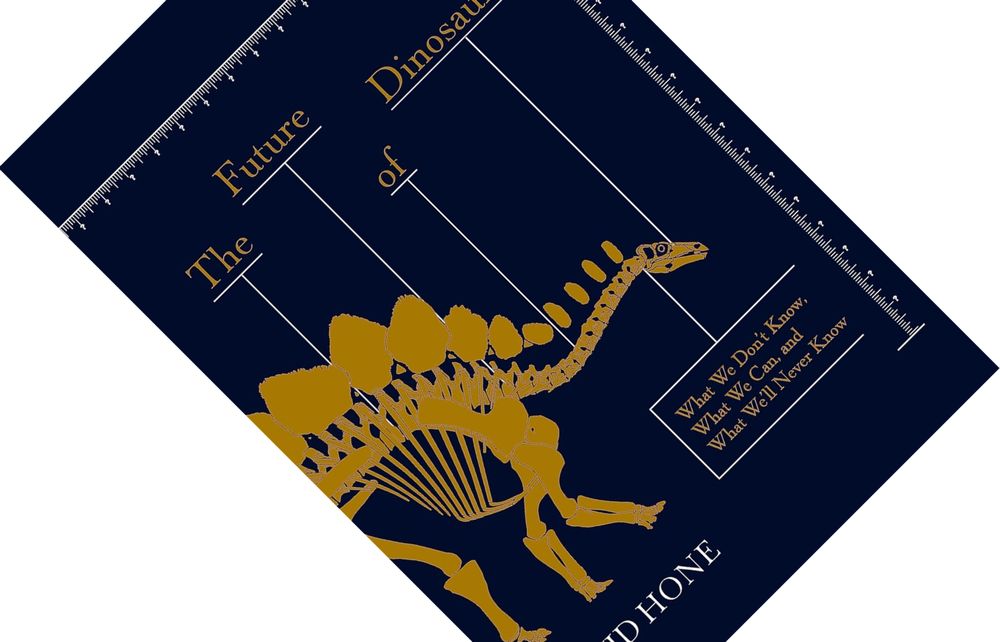
The Future of Dinosaurs: What We Don’t Know, What We Can, and What We’ll Never Know, written by David Hone, published in Europe by Hodder & Stoughton[1] in March 2022 (hardback, 252 pages)
This book seemingly flows from Hone’s efforts at science communication. In speaking to the general public, he has noticed the sometimes large disconnect between what palaeontologists know and what people think they know. Thus was planted the seed for a Rumsfeldian[2] book about what is unknown, what is knowable, and what is unknowable in palaeontology. Fifteen chapters run the gamut of topics and chart the cutting edge of our ignorance and our understanding. Given the large number of popular dinosaur books, it is a refreshing take on the genre that is chock-full of interesting insights.
Take some examples of unknowns. What is the total number of species that ever evolved and how many can we still expect to find? That is unknown, though if you plot discovery rate against time you expect a curve that will eventually level off. Where we are on that curve? Who knows! The rate at which we name new species each year shows no signs of slowing down yet. Did sauropods have multi-chambered stomachs like today’s large herbivores? That is unknown, as soft-tissue preservation of this kind is exceedingly rare. All we have for now is a spectacular fossil of the small theropod Scipionyx where the guts were infilled with sediment, resulting in a remarkable cast of an otherwise unremarkable digestive tract.
Many things are knowable though, with questions often being an absence-of-evidence problem that can be resolved with more fossils and more research. Anatomical features such as the frills of ceratopsians are usually bent and broken during the long journey through time, but detailed scans and computer analyses allow us to undo such distortion virtually. It is still early days for this technique, but we have the fossils, so with time, effort, and experience, our knowledge is likely to improve. Were dinosaurs sexually dimorphic? That is, did males and females differ noticeably in size or appearance? Since most species are only known from one or a few specimens, we just do not have the required sample sizes yet, and where we do, we have not found such differences. However, given the large diversity of dinosaurs, there are bound to have been sexually dimorphic species, so with more fossils this question is ultimately answerable.
“[The] disconnect between what palaeontologists know and what people think they know […] planted the seed for a Rumsfeldian book about what is unknown, what is knowable, and what is unknowable in palaeontology.”
The unknowables are some of the most fascinating and frustrating questions discussed here. Are tooth marks on bones the result of predation or scavenging? Predators readily did both and the two are near-indistinguishable. “This is annoyingly trite as a revelation about their behaviour” (p. 183), but the data simply do not allow for firmer conclusions. The small asterisk is that some questions are not strictly unknowable, but would require such unlikely fossils that, for all intents and purposes, we can consider them unknowable. Others require completely new types of evidence that we had not previously conceived of. For example, the colour of dinosaurs was considered unanswerable until recently. The discovery of ancient biomolecules such as melanosomes changed that somewhat, as their shape corresponds to colour. “It is as if you went to a paint store and each colour was in a uniquely shaped pot” (p. 151), is how Hone memorably describes it. But he quickly tones down the enthusiasm: only certain colours are melanosome-based and sampling them is destructive, so palaeontologists try and limit it to spot sampling. Our knowledge is thus far less certain and complete than artist reconstructions suggest.
Despite my enthusiasm for Hone’s three-pronged approach, I do have some criticism. First is that the order of chapters feels somewhat haphazard, with the book jumping around between different topics and levels of organisation. Some closely related topics are scattered over the book with e.g. chapters on habitat and ecology separated by seven chapters. Others feel out of order. Why start with a chapter on extinction when, by your own admission, anatomy (now chapter 7) is the fundamental topic on which everything else in palaeontology is built? I would have reorganised the chapters for a more logical structure. Second is that the writing is sometimes not the most graceful. Take the book’s subtitle: to me, it cries out for a third “know”; leaving it out of the middle clause is just jarring. There are examples of long, run-on sentences expressing several ideas that should have been separated. Other sentences are awkwardly constructed, or switch from passive to active voice midway, with my brain expecting one thing but Hone writing something else. Now, I do not want to over-egg this: big picture, they are all minor blemishes on what is otherwise an entertaining and engaging book.
Next to Hone’s stated running theme of the disconnect between the public’s perception of our knowledge and our actual knowledge, some other fascinating themes emerge. One example is the nature of the fossil record and how it can mislead through both a glut and a dearth of fossils. Bonebeds are often significant sources of information due to the large number of bones preserved, but if they resulted from abnormal circumstances such as catastrophic floods, droughts, or volcanic eruptions, how representative are such assemblages? They risk giving “a very misleading picture of what lived locally and in what kind of numbers” (p. 194). At the other extreme are the low odds of preserving the statistical outliers such as the largest or oldest individuals. Similarly, newly emerging species often occur in low numbers and limited geographic areas, so the age of a species should be considered a minimum estimate. The odds are very much stacked against the earliest, if not the first, representatives of a species entering the fossil record, surviving to the present day, and then being discovered rather than lost to erosion.
“[…] some other fascinating themes emerge. One example is the nature of the fossil record and how it can mislead through both a glut and a dearth of fossils.”
Another fascinating theme that emerges is the impact of the huge size range of dinosaurs on their biology and ecology. Dinosaurs never evolved to be rodent-size small; as Elsa Panciroli discussed, mammals occupied that ecological niche. Furthermore, independent of their adult size, dinosaurs hatched from eggs as small juveniles and had to go through sometimes gargantuan growth spurts. Hone points out that juveniles of sauropods and large theropods simply could not have been eating the same food and playing the same ecological role as the adults. Fellow palaeontologist Michael J. Benton recently highlighted research that suggested carnivores passed through a range of feeding modes as they grew up, sequentially occupying different ecological niches and effectively acting as different species on their way to adulthood. Similar shifts might have also happened to metabolism, Hone suggests. Adult sauropods were so large that their surface-to-volume ratio meant they did not need to actively generate body heat to keep warm (a condition known as gigantothermy). But the same could not have been true of small juveniles; seeing their growth rates they likely were endotherms, actively generating body heat. If true, this would be remarkable, as we know of no living species that so radically change their physiology growing up.
Despite some minor flaws, The Future of Dinosaurs is both a fascinating exploration of our ignorance and a celebration of how much we have learned from sometimes very challenging source material. By tracing the contours of where our knowledge ends, Hone gives you an insider’s look into the discipline—from its storied history to today’s cutting-edge technologies. It seems almost prophetic that he writes that behaviour is the subject where we see the greatest disconnect between what palaeontologists know and what the public thinks they know: he tackles this topic in his recently published Uncovering Dinosaur Behavior to which I will turn next.
1. ↑ Note that in the USA, this book was published by Princeton University Press with the title How Fast Did T. rex Run?: Unsolved Questions from the Frontiers of Dinosaur Science.
2. ↑ I am, of course, referring to United States Secretary of Defense Donald Rumsfeld’s briefing where he popularised the notion of known knowns, known unknowns, and unknown unknowns.
Disclosure: The publisher provided a review copy of this book. The opinion expressed here is my own, however.
Other recommended books mentioned in this review:
__________________________________________________________________
__________________________________________________________________

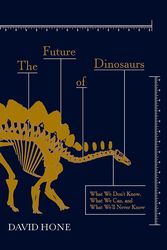

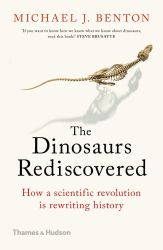
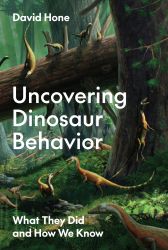
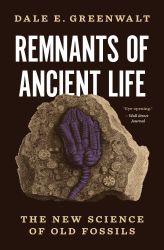


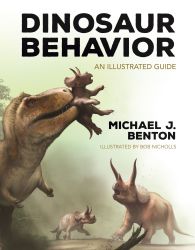
Is this book the same one titled “How Fast did the T. rex run? Unsolved questions from the frontier of dinosaur science”. Are they like different region editions? They seem to be tackling similar subject matter, and published around the same time.
LikeLike
Hello, it is indeed. The book was published in the US market with that title by Princeton University Press. It’s not uncommon for the rights to popular trade titles to be sold to different publishers in different territories, and for them to then package it differently (different cover art, different title), which can be quite confusing! So, let me add a note to the review about this.
LikeLiked by 1 person
Thanks for clarifying, and putting in the note 🙂
LikeLiked by 1 person